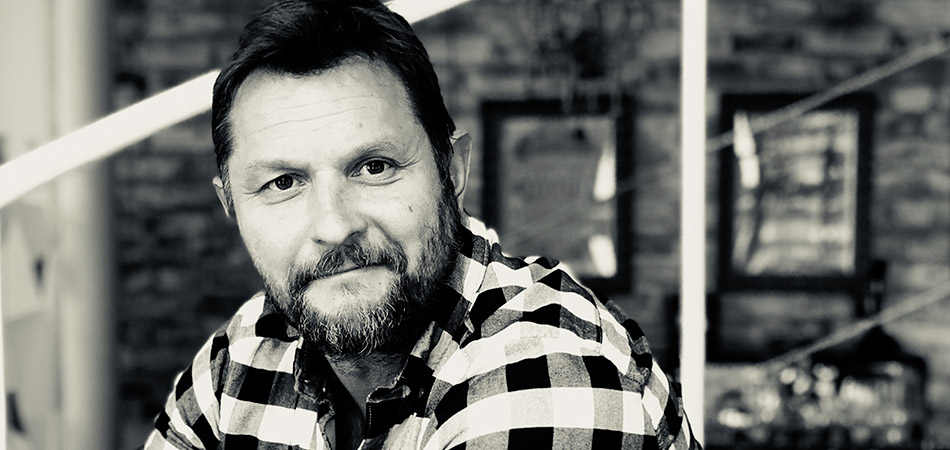
Tesco Mobile and BBH London use humour to showcase the network’s connectivity
‘It Pays to be Connected’ reaches consumers with relatable circumstances
“Getting an audience's attention and keeping it is the name of the game. Human, authentic and intuitive experiences are everything."


Career to date:
2014, Executive Creative Director, ignis
2000, Creative Director, ignis
1995, Senior Art Director, ignis
1992, Art Director, Origin 8
Nick Peters: My primary focus within the business is to identify and understand what great work looks like and why, both within the agency and externally with our partners and clients. Ensuring we uncover the ‘why’ not just the ‘what’ and then developing an understanding of that process amongst the broader creative team within the agency. But most importantly, to take our clients on that journey with us. To support them in their evaluation of the work and give them the belief and confidence to be brave in their decision making.
Nick Peters: I had always wanted to work in the creative industry and had great aspirations as a teenager to create the next Hamlet or Heineken TV campaign. I just didn’t really understand that there were different avenues within the industry so ended up in the BTL camp more by luck than judgement. Having returned from travelling to Australia, I was introduced to Stephanie Whitaker [Ignis MD] and offered a short-term freelance role within ignis, a small sales promotion and field marketing agency in South Kensington. Not a bad placement given that I have since worked on a number of Hamlet campaigns, married the PA and am now Steph’s business partner!
Following a stint working for a number of agencies in the communications and technology sectors, Steph asked me to return in 1995 to work on ignis' expanding portfolio of FMCG and leisure industry clients. In the prevailing years I have been fortunate enough to see the agency grow and develop its offering, giving me the opportunity to work in a variety of categories and disciplines with a wonderful array of brands. From the heady days of tobacco sponsorship in Formula One to music festivals becoming their own marketing channel to the evolution of disruptive technologies, it’s been an exhilarating journey that has seen some extraordinary changes and continues to provide us with exciting challenges. The rules have changed significantly over the past 30 years. Audiences now dictate the conversation, not the other way around. Brands are no longer defined simply by the product or service they offer but by the experiences they provide.
“Getting an audience's attention and keeping it is the name of the game. Human, authentic and intuitive experiences are everything. Disruption is annoying if you're not what your audience is interested in, so make sure you are."
Nick Peters: I think the values on which the agency was built are still the values we have today and are embodied within every member of the agency, even though we are five times the size. [We are] a group of passionate marketeers who love brands, are excited by innovation and understand that, fundamentally, audiences are just people. We’ve always believed that good marketing doesn’t have to be complicated. And invariably, it isn’t. Bollocks bingo and acronyms have never really been important to us. Yeah, we can do it, but we’d rather be an agency that is measured by the effectiveness of a simple idea rather than how intelligent it sounds.
We still see the democratisation of the creative idea as being central to the agency’s culture. So, we can provide an inclusive environment that nurtures and celebrates ideation from all corners of the business. It’s what helps to bind us as an agency and makes everyone feel like they belong to something more than just a department. It’s how our values were created and what engenders such genuine support for one another.
For a large number of creatives in the industry, working at a ‘big’ agency tends to be the ultimate ambition. But in my experience a large number of them become siloed into retained client business and specific disciplines. I’ve never really considered leaving because working within a smaller creative entity has given me so many more opportunities and challenges. We actively employ a fluid model within the creative department to ensure that our team is exposed to a dynamic range of disciplines across a broad spectrum of clients and categories. It’s not just a principle that retains and acquires creative talent. It turbo charges their development too and we’re really proud of that.
Nick Peters: Our work for Jameson whiskey and Sheraton hotels were both award winning highlights. Both utilised travel retail to bring their offerings to life using intuitive disruptive technology to surprise and delight their respective audiences as part of their travel experience. The former piece of activity pioneered a 360-degree media experience within Gatwick’s departure lounge that was a first for the airport. Both projects were initially briefed in simply to create digital content. So, to develop concepts that over delivered in terms of social engagement and reach and created memorable live experiences in a difficult environment was a significant achievement.
Nick Peters: AMV BBDO’s Blood Normal campaign for Bodyform was a stand-out campaign for me. It was a pioneering piece of work that championed a new norm and changed the point of conversation. Its single mindedness and bravery was bold and refreshing and sets a great example as to how advertising can be used for good.
Nick Peters: AMV have done fantastic work for Sainsbury’s. John Hegarty’s bunch [at BBH] similarly have done an extraordinary job for Tesco’s and I loved their Absolut Nothing to Hide campaign. Mother’s ‘FCK’ campaign was simple genius.
“[Experiential is] about right time, right place, right way and having a longer narrative. That's the ambition. The problem is that we live in a very tactical society where you're not trying to change a brand opinion over the next 18 months anymore. You're trying to drive sales in the next quarter."
Nick Peters: Getting an audience’s attention and keeping it is the name of the game. Human, authentic, and intuitive experiences are everything. Disruption is annoying if you’re not what your audience is interested in, so make sure you are. And if you’re going to talk the talk, you’d better make sure you walk the walk. Today’s audiences will spot a ‘piggy-backer’ from a mile off. Technology is driving the possibilities of co-curation and personalised experiences to new heights making them even more convenient. It will be fascinating to see how the growing cynicism around data combined with the demand for more socially conscious advertising will shape the nuances of how we communicate with audiences going forward. One thing’s for sure, they will be dictating the conversation.
Nick Peters: To continue to transform. It’s why we are still here after 30 years and in the shifting sands of the industry, the only way to survive and thrive. We want to continue to grow our FMCG portfolio and help our clients ensure that human, social and intuitive experiences are at the heart of every brand interaction.
Nick Peters: It’s about right time, right place, right way and having a longer narrative. That’s the ambition. The problem is that we live in a very tactical society where you’re not trying to change a brand opinion over the next 18 months anymore. You’re trying to drive sales in the next quarter. There’s this juxtaposed position where the ambition is you want to do this long term, evolving and changing but the reality is the demand for sales objectives.
Nick Peters: All Blacks rugby inspires me in terms of how to create a culture for success. Their creativity and ability to regenerate on a continuous basis is extraordinary. Their product is always top notch and given their population, the return on investment is pretty awesome too. Sorrell would have been proud of that business model, I am sure. The mantra that each player’s duty is to better the performance of the last man to wear the shirt is inspiring. The understanding that you only hold onto the shirt for a better man to wear it is truly humbling. A metaphor for the greatest creative entities, no doubt.
Customers want to know more about the social, economic and environmental impact of brands. How do you encourage that from brands that you work with? How do you ensure that they’re also matching that agenda?
Social and environmental consciousness is no longer a sub-culture exemplified by tree hugging fundamentalists or activists on Greenham Common. It is an open topic of conversation, driven by a new generation of consumer. And is as likely to be discussed as the football scores at the weekend.
We encourage our clients to reframe their environmental or socially conscious values in new and exciting ways that offer a different perspective. Not only to make their brand relevant but also to provide it with a unique conversation. For instance, a brand is quite happy to spend millions sponsoring a football stadium because it is a meaningful conversation for its audience. If you apply the same logic, environmental and social causes become an interesting sponsorship proposition. Brands would have killed for the sort of exposure and engagement that ‘Boomy McBoomFace’ achieved when it was developed. It has in essence become a brand in its own right. The watch-out is to ensure that any perceived values are genuine to the ‘nth degree. Audiences will bite you on the arse if you don’t.
Looks like you need to create a Creativebrief account to perform this action.
Create account Sign inLooks like you need to create a Creativebrief account to perform this action.
Create account Sign in